It’s fall! Well, almost, but that hasn’t stopped me from getting out my fall decorations.
Unfortunately, with the season change comes more respiratory sickness—the weather changes so people head inside, viruses mutate, and social networks change (school starts, holiday celebrations occur).
While Covid-19 continues to ravage, we’re getting signs that other respiratory viruses are starting early. YLE will bring you regular updates throughout the season because there are things you can do to minimize disruption to your life.
Let’s dive in.
ILI: Low, but starting to creep up in the South
During the respiratory season, epidemiologists pay close attention to “influenza-like illness” (ILI). Healthcare providers tally the number of patients who present to their office with ILI symptoms—fever, cough, and/or sore throat. This encompasses multiple viruses (Covid-19 is usually separated if it’s tested for) but is a good indication of the overall climate of respiratory health.
Nationally, ILI is still very low, but it’s starting to creep up in the South, like in Georgia. This is normal—ILI usually begins in the South and then spreads outwards nationally. We don’t know why this pattern exists, but it is a consistent reminder that “sickness season” is just around the corner. It seems to be a few weeks early.
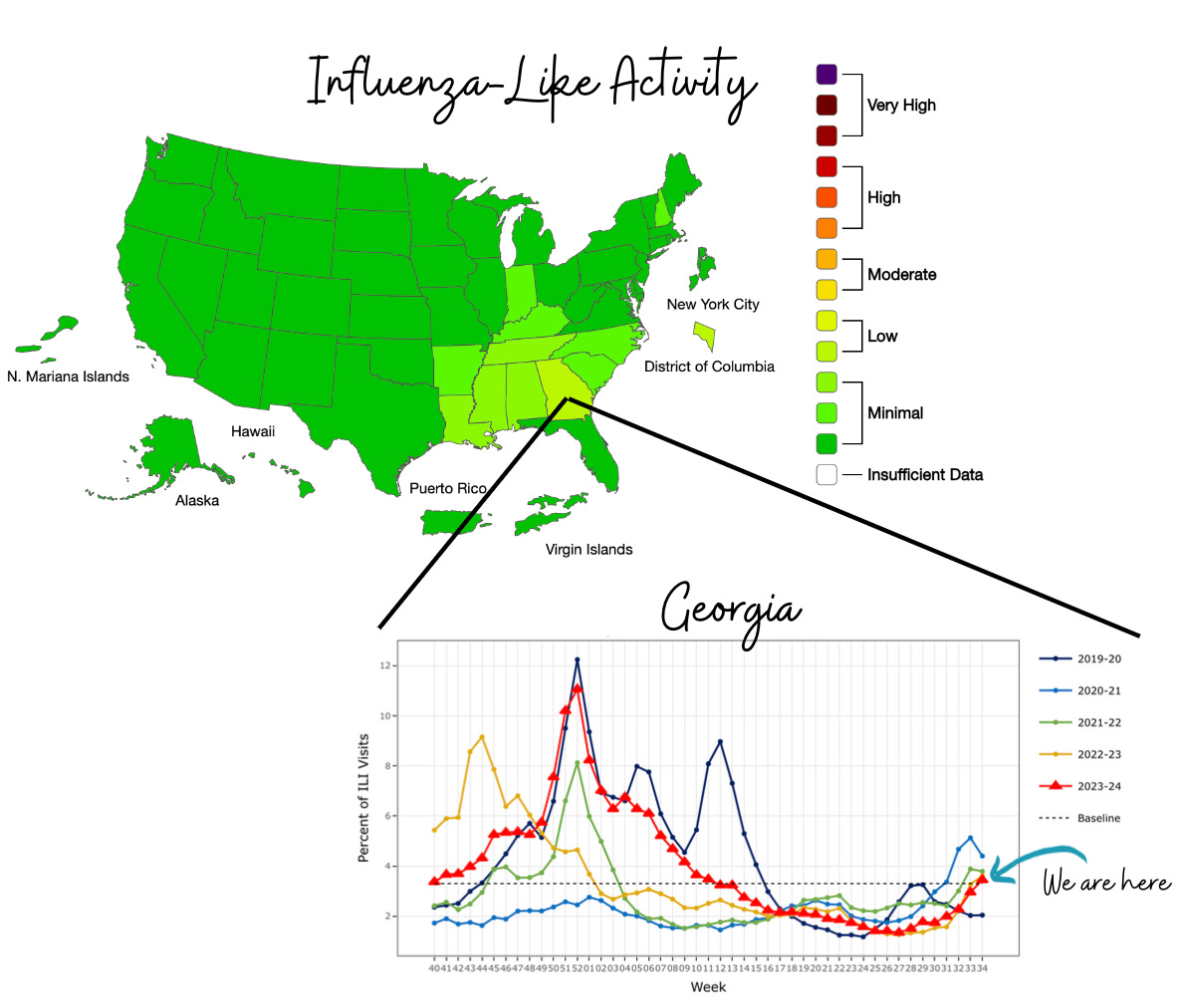
Looking closer at Georgia, we see that the uptick is mainly driven by rhinovirus/enteroviruses, which typically cause “common cold” symptoms.
School-aged children are driving this uptick, which should be no surprise as schools started this month.
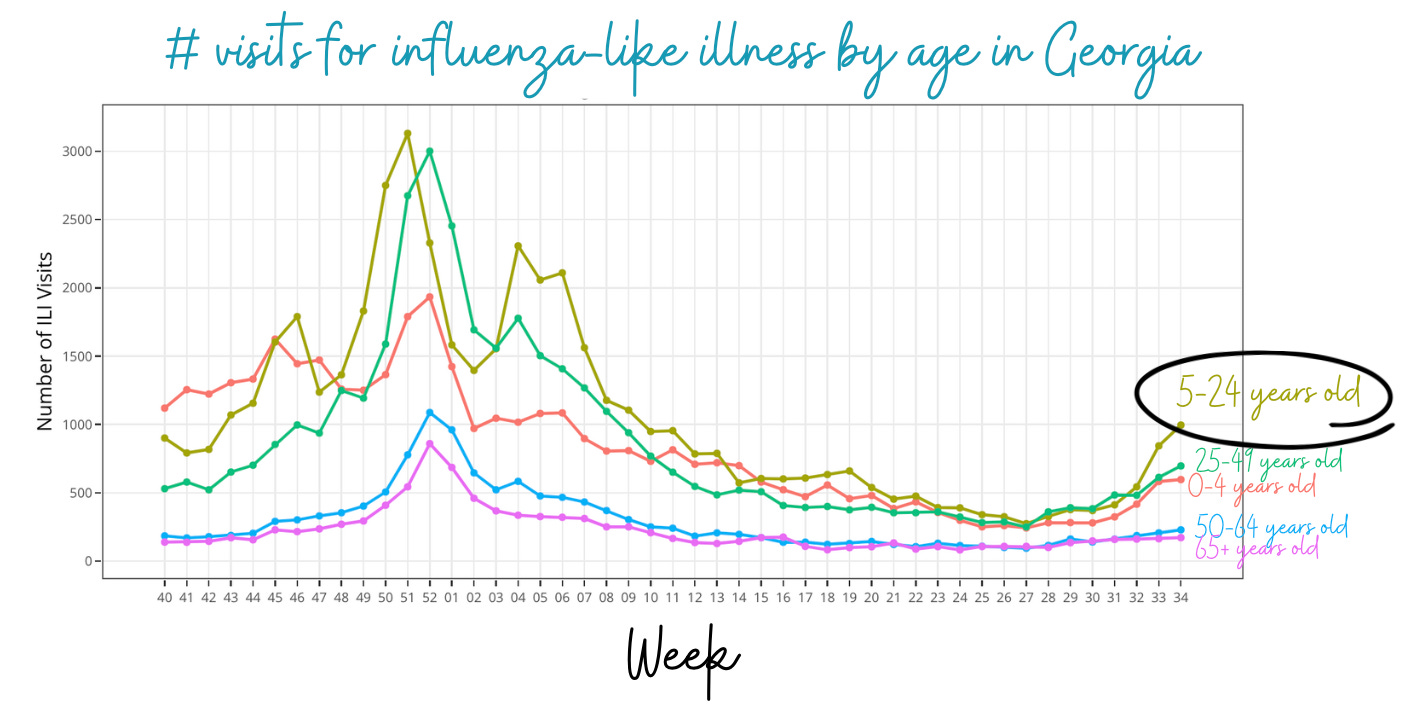
Covid-19: Very high but possibly peaking
Nationally, wastewater levels for Covid-19 are still very high. All states, except Michigan, have “high” or “very high” levels. Michigan had a sudden drop in wastewater levels this week, so I expect this to be due to unstable data instead of a reflection of “true” levels. Time will tell.
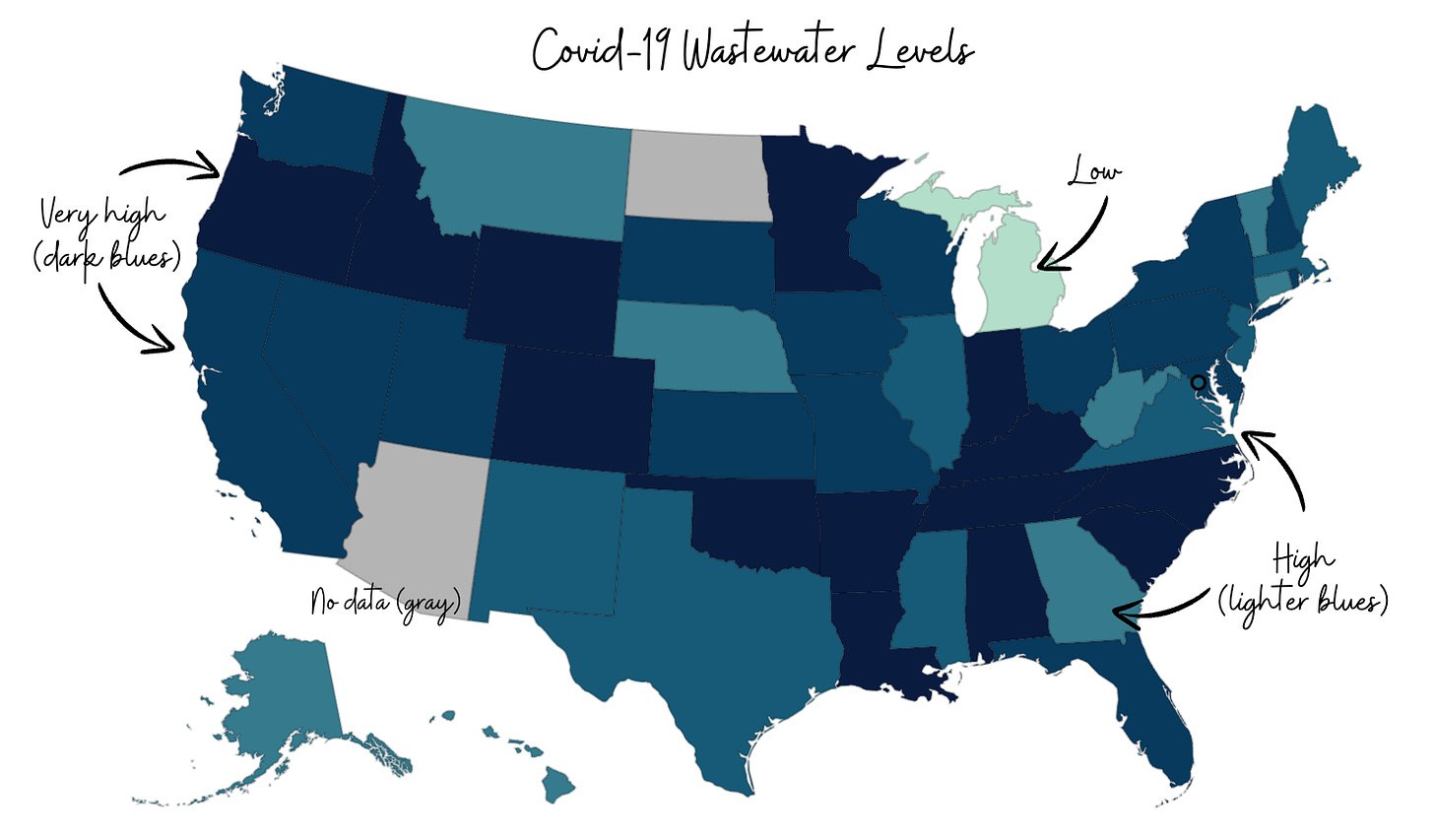
While the West has peaked (notably at the same levels as last winter; this was no small wave), the other regions are still rising.
Because other metrics, like emergency department visits and test positivity rates, have also peaked nationally, this is a solid sign that we will soon start riding the wave down.
Hospitalizations continue to rise. For the third week in a row, more than 1,000 Americans have died from Covid-19.
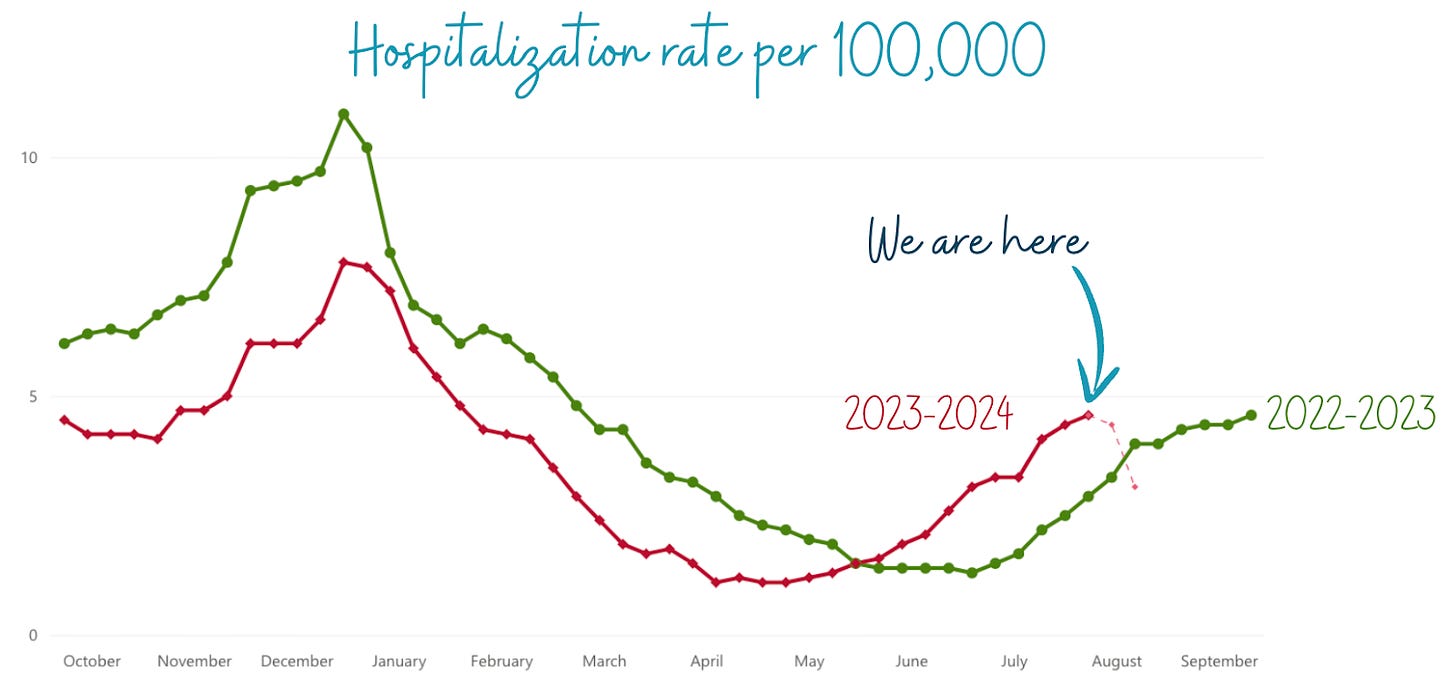
Covid-19 continues to mutate (as viruses do.) An Omicron subvariant—called XEC—is on the horizon, but it’s still too early to tell if this will drive the next infection wave. Some are concerned, but Germany is the only country with enough reliable data, and XEC is not spreading quickly. I am sure another subvariant is cooking.
What can we expect going forward?
Epidemiologists expect a “middle of the road” respiratory season, like last year. Two things are driving this educated guess:
Southern Hemisphere. We in the Northern Hemisphere have an advantage—the Southern Hemisphere’s respiratory season occurs before ours, so we can look to their winter season to predict ours. ILI in Australia was about on track with the 5-year average. The flu vaccine was also a good match for this season, which is excellent news.

Mathematical models using previous patterns, immunity, and waning data. Last week, CDC modelers predicted hospitalizations of all respiratory viruses will remain higher than “pre-pandemic” levels. They also published two likely scenarios for the upcoming months for Covid-19. They predict we will have a similar or less severe Covid-19 winter as last year.
Emerging diseases update
There isn’t necessarily anything for the general population to do for these diseases, but we’re keeping you up to speed.
H5N1 continues to spread. Over the weekend, H5N1 was detected in California herds for the first time. California is the number one milk producer in the United States, so the milk supply may be impacted if the spread continues. California also has an extensive raw milk consumption market, so we may see our first severe case from raw milk. All eyes are on the upcoming seasonal flu. If a farm worker gets infected with H5N1 while sick with seasonal flu, the viruses can easily swap genes to become more adaptable to human spread. This increases the risk of an influenza pandemic.
Mpox continues to spread in central Africa, and few resources are available to contain it. A few countries have pledged vaccines, but not enough to get this outbreak under control. Last week, CDC sent 72 epidemiologists to aid in the response.
WHO started vaccinating for polio in Gaza after the first infant case was detected after 25 years. This shouldn’t be a surprise, as thousands of children are missing their routine vaccinations due to the war. The vaccine being used is an oral live vaccine, which is cheap, quick, and easy to administer. However, one big long-term disadvantage is that it will further the spread of polio (in feces from the live vaccine) because of the lack of clean water and functioning sewage. Nonetheless, 161,000 children have been vaccinated since September 1 in a herculean effort. 640,000 children— or 90% of children— must be vaccinated for the campaign to work against transmission.
Bottom line
Fall respiratory season is around the corner! Make a plan to get your vaccines. And best of luck to fellow parents out there, as we know this means sick kiddos on the horizon.
Love, YLE
“Your Local Epidemiologist (YLE)” is written by Dr. Katelyn Jetelina, MPH PhD—an epidemiologist, data scientist, wife, and mom of two little girls. During the day, she is a senior scientific consultant to a number of organizations, including the CDC. At night, she writes this newsletter. Her main goal is to “translate” the ever-evolving public health science so that people will be well-equipped to make evidence-based decisions. This newsletter is free, thanks to the generous support of fellow YLE community members. To support this effort, subscribe below:







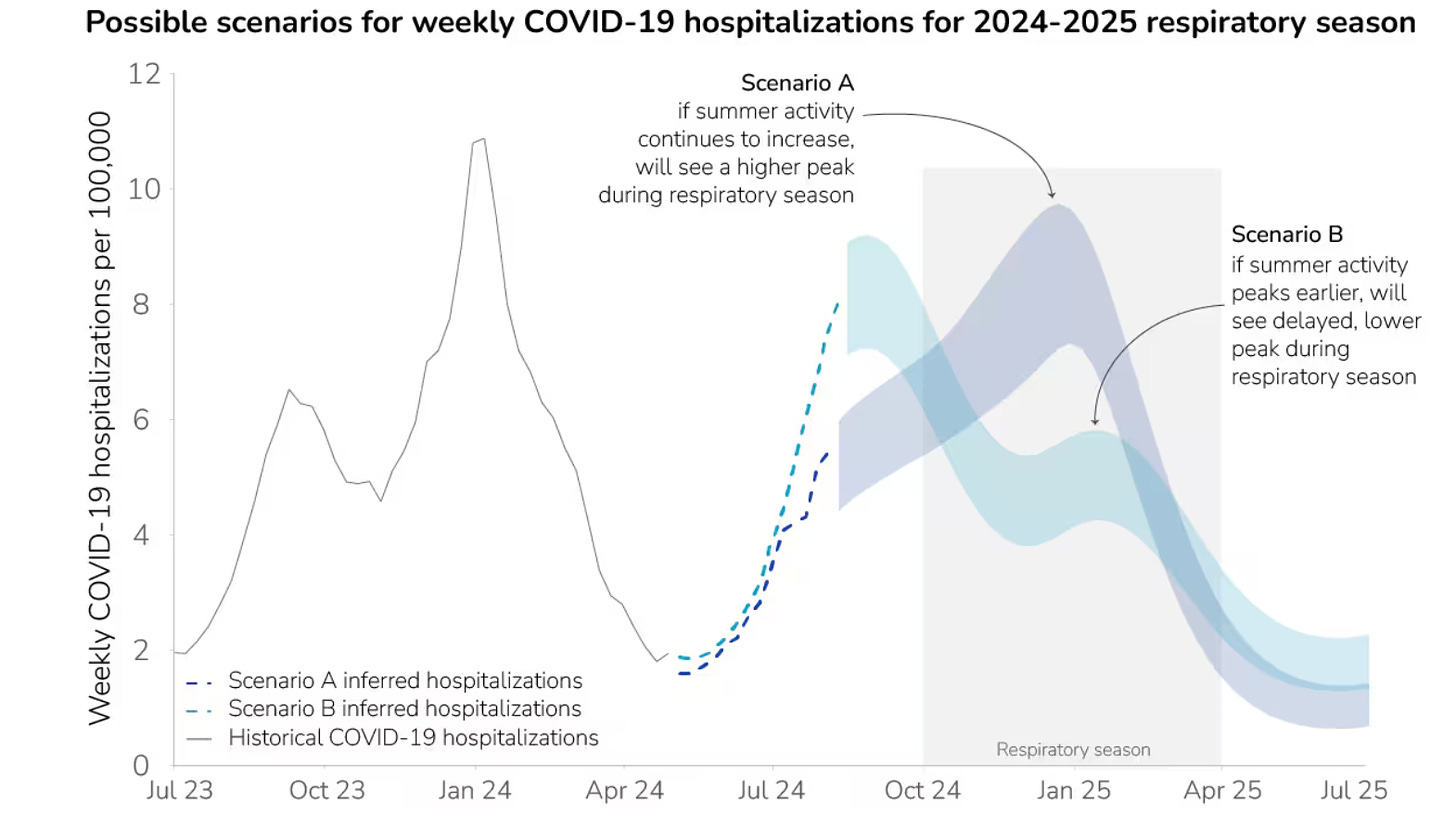

As a former public school teacher, my theory on the early rise of respiratory like illnesses and Covid 19 in the south is the start of school. The south begins the school year much earlier than most regions. The many of the school districts in Georgia began the school year on August 1 or August 8. Some evan as early as the end of July. Just my thoughts.
We appreciate you keeping us informed! You have been a blessing through this covid pandemic.
Yet another invaluable update from the YLE Team. Thank you so, so much!